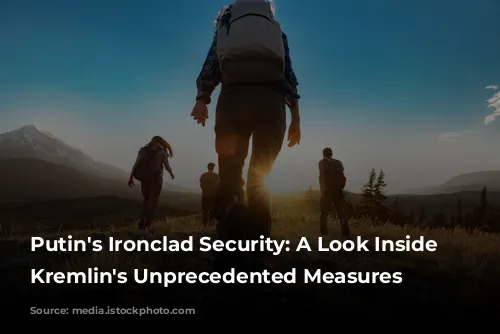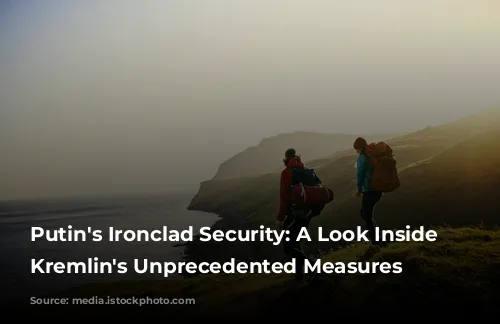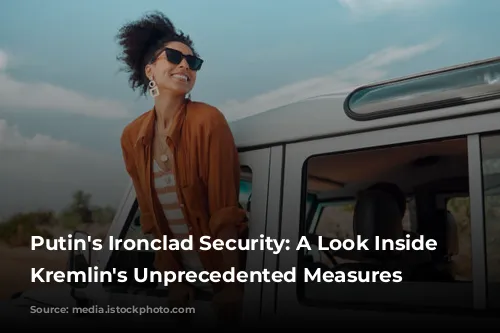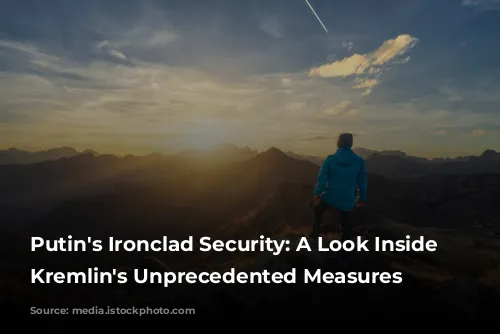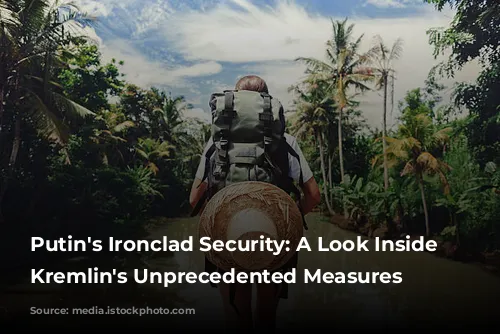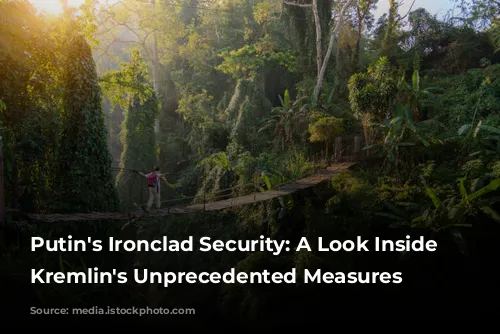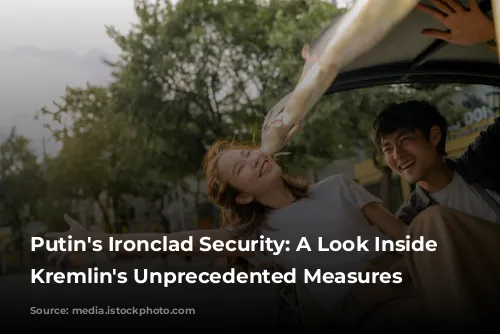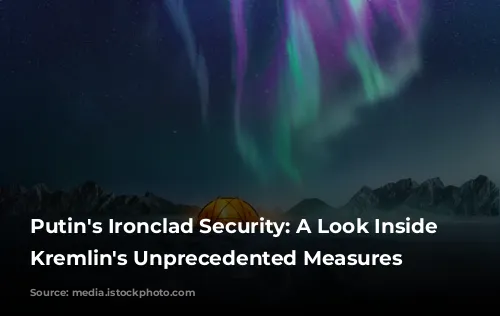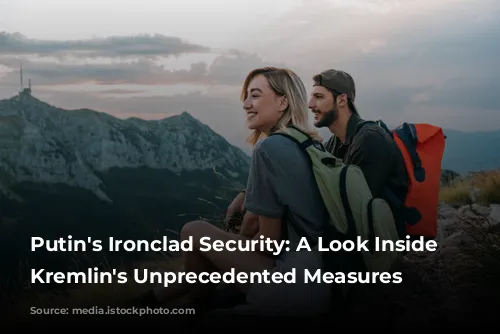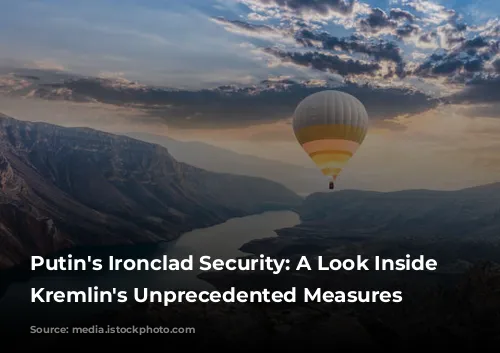Fear and paranoia grip the Kremlin, pushing the already stringent security measures surrounding President Vladimir Putin to unprecedented levels. Following recent attacks on high-ranking politicians in Europe and Asia, the Kremlin is on high alert, taking no chances with its leader’s safety.
“The Kremlin takes Vladimir Putin’s security very seriously,” revealed a Russian official who witnessed the Victory Day parade on May 9th. This official, like others interviewed for this story, requested anonymity due to the sensitive nature of the information. “He is protected by a whole army of visible and invisible guards,” the official emphasized.
The Kremlin’s anxieties are fueled by multiple threats, including the International Criminal Court’s (ICC) warrant for Putin’s arrest on war crimes charges. The risk of Ukrainian drone and sabotage attacks, as well as potential attacks by Islamist radicals, further intensifies the security concerns.
The 2022 assassination of Japanese Prime Minister Shinzo Abe and the attempted assassination of Slovakian Prime Minister Robert Fico last month have amplified the Kremlin’s vigilance.
“Security measures are at the standard level. We are doing everything that needs to be done to ensure the president’s security,” said Kremlin spokesman Dmitry Peskov in May, dismissing any escalation of security measures.
But behind the official pronouncements, a stark reality emerges. A source close to the Kremlin unveiled the extreme lengths to which Putin’s security is taken, revealing a near-total control over his life, including meticulous food testing for poison.
“The president has personal chefs who always travel with him. Groceries are brought with him too,” the source disclosed. “But even then, there is always a special group of officers traveling with Putin who check all the meals before Putin gets to them.”

Putin’s Body Armor: A Symbol of Heightened Security
Since at least 2023, Putin has been consistently wearing body armor at public outdoor events, including in Moscow. This decision is based on the strong recommendation of the Presidential Security Service (SBP), a unit within the Federal Guard Service (FSO) responsible for the president’s protection.
Putin even donned body armor under his coat during this year’s Victory Day events, a crucial holiday commemorating the Soviet victory over Nazi Germany in World War II.
“This year on May 9, the chief [Putin] was clearly wearing concealed body armor during the parade. And that precaution, I think, is necessary,” affirmed one of the officials who witnessed the event.
“God protects the cautious,” added another official.
An independent security consultant, Jade Miller, examined video footage of Putin at the Victory Day parade at The Moscow Times’ request. Her analysis confirmed the presence of a bulletproof vest.
“Putin appears to be walking in a rather rigid manner and there are no natural creases appearing at the back of his overcoat when walking and shaking military personnel hands,” Miller observed. “Putin’s upper body frame looks unnatural and his shoulders appear rather wide & square, showing no shape of the back and shoulder blades. At approximately 1:44, a part of his overcoat appears to get caught under what could potentially be a ballistic vest.”
Miller also pointed to several instances where Putin seemed to adjust his shoulders awkwardly, suggesting discomfort from wearing a ballistic vest.
“Putin is observed to keep his overcoat fastened up high and is seen to be checking that it is closed, as though he is trying to ensure no one can see an undergarment,” Miller added.
“In my professional opinion, Putin is wearing some form of ballistic protection during his time attending the parade,” she concluded.
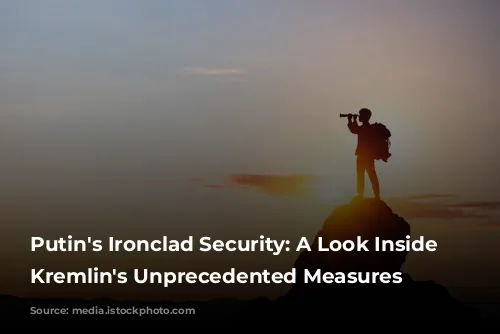
A Fortress of Security: Victory Day Parade Under Tight Surveillance
Victory Day, a cornerstone of the Kremlin’s calendar, is marked by stringent security measures.
The FSO, responsible for safeguarding the nation’s top officials, shuts down Red Square to the public two weeks before the May 9th parade. The area surrounding the war memorial near the Kremlin walls, where Putin, foreign dignitaries, and Russian elites lay flowers, is also closed off.
Each person attending the parade alongside Putin requires a personal invitation from the Kremlin. The security services conduct thorough background checks, scrutinizing each guest’s political reliability and loyalty.
Before entering Red Square, all attendees, including World War II veterans, officials, and deputies, undergo meticulous personal inspections.
This year, as Putin oversaw the parade and laid a wreath at the Tomb of the Unknown Soldier, he was surrounded by roughly two dozen security guards with portable body armor disguised as briefcases.
Dozens of special forces officers, out of sight of the live TV cameras, remained on high alert.
Meanwhile, snipers from the SBP occupied strategic vantage points on the roof of the Kremlin, the GUM department store, and other buildings surrounding Red Square.
“Putin is a rather unique leader in that he usually agrees to increased security/expansion of the security perimeter when his guards ask for it,” explained investigative journalist Andrei Soldatov.
“Usually, other leaders tend to be in constant conflict with their guards, but not Putin. He almost always goes along with their demands. And right now, I think he’s going along with them,” Soldatov concluded.
As the world watches, the Kremlin’s unwavering commitment to Putin’s safety underscores the profound anxieties and escalating security threats that surround the Russian president.
